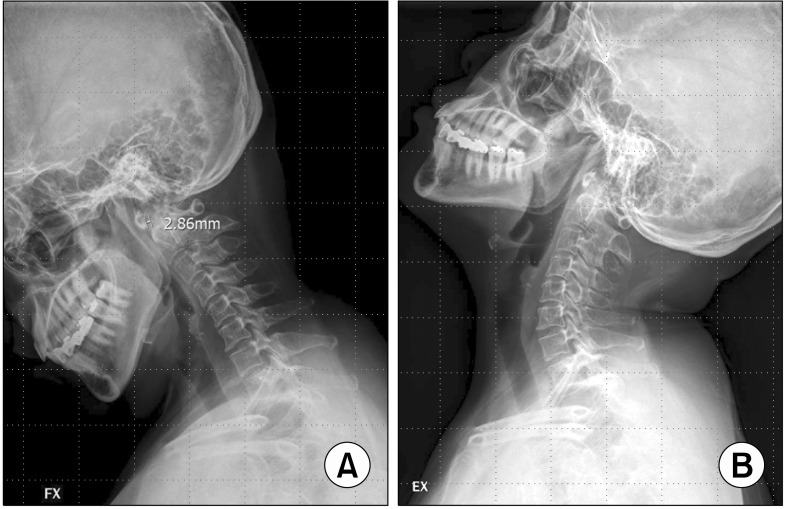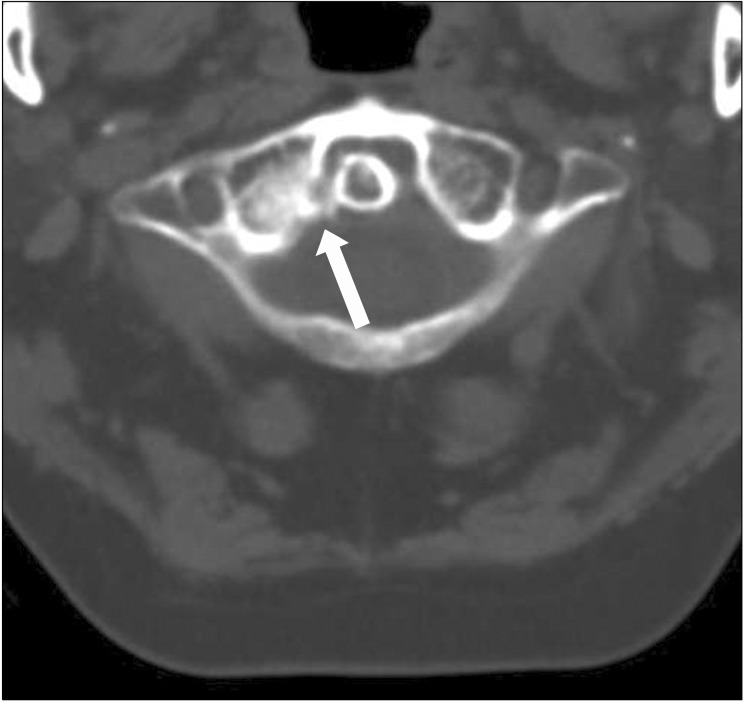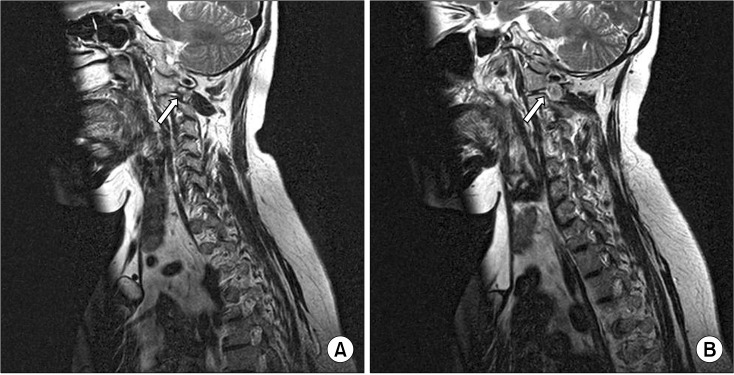Korean J Pain.
2012 Oct;25(4):258-261. 10.3344/kjp.2012.25.4.258.
Unrecognized C1 Lateral Mass Fracture Without Instability; The Origin of Posterior Neck Pain
- Affiliations
-
- 1Department of Anesthesiology and Pain Medicine, Seoul National University Bundang Hospital, Seongnam, Korea. hiitsme@snubh.org
- 2Department of Anesthesiology and Pain Medicine, Seoul National University Hospital, Seoul, Korea.
- KMID: 2278167
- DOI: http://doi.org/10.3344/kjp.2012.25.4.258
Abstract
- Posterior neck pain is a common complaint of patients in the pain clinic. The atlas (C1) burst fracture is known to be a cause of posterior neck pain and instability. Although the atlas burst fracture and instability can be discovered by plain X-rays which show lateral mass displacement or widening of the atlantodental interval, assessment of an atlas burst fracture can be difficult if there is no instability in the imaging study. Here we report a case of a 46-year-old female patient who had complained of sustained posterior neck pain for 6 months. Plain X-rays showed only disc space narrowing at C4/5 and C5/6, without any cervical instability. However, an unrecognized C1 lateral mass fracture was detected by CT and MRI. The patient's pain was then successfully treated after atlantoaxial joint injection with a C2 DRG block.
Keyword
MeSH Terms
Figure
Reference
-
1. Kakarla UK, Chang SW, Theodore N, Sonntag VK. Atlas fractures. Neurosurgery. 2010; 66:60–67. PMID: 20173529.
Article2. Dickman CA, Mamourian A, Sonntag VK, Drayer BP. Magnetic resonance imaging of the transverse atlantal ligament for the evaluation of atlantoaxial instability. J Neurosurg. 1991; 75:221–227. PMID: 2072158.
Article3. Spence KF Jr, Decker S, Sell KW. Bursting atlantal fracture associated with rupture of the transverse ligament. J Bone Joint Surg Am. 1970; 52:543–549. PMID: 5425648.
Article4. Sherk HH, Nicholson JT. Fractures of the atlas. J Bone Joint Surg Am. 1970; 52:1017–1024. PMID: 5479472.
Article5. Landells CD, Van Peteghem PK. Fractures of the atlas: classification, treatment and morbidity. Spine (Phila Pa 1976). 1988; 13:450–452. PMID: 3187689.6. Fielding JW, Cochran GB, Lawsing JF 3rd, Hohl M. Tears of the transverse ligament of the atlas. A clinical and biomechanical study. J Bone Joint Surg Am. 1974; 56:1683–1691. PMID: 4434037.
- Full Text Links
- Actions
-
Cited
- CITED
-
- Close
- Share
- Similar articles
-
- Posterior C1-2 Transarticular Screw Fixation in Atlantoaxial Instability
- Unusual Anterior Arch Fracture of C1
- Posterior Atlantoaxial Fixation with Lateral Mass Screw in the Atlas and Pedicle Screw in the Axis
- The Intersection Between Lateral Mass and Inferomedial Edge of the C1 Posterior Arch: A Reference Point for C1 Lateral Mass Screw Insertion
- Troublesome Occipital Neuralgia Developed by C1-C2 Harms Construct




